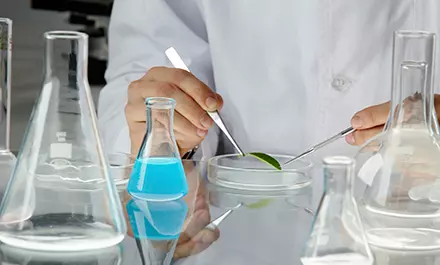
Common E-cigarette Knowledge Summary
1. Does the atomizer of XXX consume a lot of e-liquid?
The e-liquid consumption of an atomizer depends on factors such as the number of coils, oil guiding speed, and output power settings. Generally speaking, unless pursuing high power output, the e-liquid consumption of an atomizer is not too high, similar to the difference in fuel consumption between driving a high-horsepower off-road vehicle and a family economy car for the same distance.
2. Why does the air hole leak e-liquid?
The reasons for e-liquid leakage from the air hole may include the oil tank not being tightened, the O-ring in the sealing compartment being cracked, the O-ring of the installed atomizer not being properly restored, or poor sealing quality due to using inferior atomizer. In addition, insufficient cotton in a DIY atomizer may also cause e-liquid leakage.
3. Why do I feel like there's spitting when I vape?
The feeling of e-liquid spitting when vaping is generally caused by the heating coil being too close to the air outlet, causing some e-liquid to be drawn into the mouth without being properly vaporized through the airflow. Checking the position of the heating coil and adjusting the distance between the cotton and the air inlet can solve this problem.
4. Why did the transparent oil storage tank I use crack? Is there a way to fix it?
Transparent oil storage tanks are usually made of acrylic or PC materials, and they may crack under temperature changes if they do not match the hardware size properly. Once cracked, it is difficult to repair and usually requires replacement of a new oil storage tank. In addition, e-liquids with high VG (vegetable glycerin) content may also cause cracks in acrylic tanks.
5. What is a short circuit in an atomizer? Is it dangerous?
An atomizer usually has a positive and negative pole at the bottom, with T-shaped rubber or silicone used as insulation material. A short circuit refers to the phenomenon where the current bypasses the heating wire and causes a short circuit at the bottom. If the mod being used has a protection circuit, there is usually no danger, but the atomizer may not function properly. However, for mechanical mods (such as tube or box mods), a short circuit can pose serious risks. Therefore, in case of malfunction, it is important to promptly check and identify the cause.
6. What are single-coil, dual-coil, and multi-coil setups? What are the benefits of increasing the number of heating coils?
Single-coil and dual-coil setups refer to the number of heating coils installed on an atomizer. By increasing the number of heating coils, the surface area of the coils that come into contact with the e-liquid can be changed, resulting in more vapor production. If you are not familiar with concepts like resistance and voltage, it is recommended to start with a single-coil setup.
7. Does a single-coil setup consume more power or a dual-coil setup?
In the entire circuit loop of an e-cigarette, the heating coil acts like an electrical appliance. The more appliances you have, the more power it consumes.
8. What are the advantages of a drip atomizer?
Drip atomizers usually use low resistance and high power output. Low resistance can instantly generate a large amount of heat energy, which requires a large amount of e-liquid to be vaporized. Drip atomizers directly drip e-liquid onto the cotton wick, which is the most efficient and fastest wicking method. At the same time, the huge vapor production from a drip atomizer can also enhance the flavor of some e-liquids to the extreme, making it the ultimate choice for advanced vapers. However, the disadvantages of drip atomizers are also evident, as they require strong DIY skills and professional knowledge, and the e-liquid consumption rate is relatively high. For novice vapers, it is recommended to start with pre-made atomizers or DIY tanks with storage.
9. What are the differences between stainless steel tanks, glass tanks, and acrylic tanks?
This refers to the material of the e-liquid storage tank in a tank atomizer. Each has its own advantages and disadvantages. Stainless steel tanks are sturdy and aesthetically pleasing, but the amount of e-liquid remaining in the tank can only be judged by taste and experience. Glass tanks are fragile, but they allow for a visual display of the remaining e-liquid level in the tank. Acrylic tanks are easy to install and in some atomizers, they can hold more e-liquid than the other two. However, acrylic tanks are also prone to cracking, and most importantly, they are not suitable for all types of e-liquids, as some e-liquids with high vegetable glycerin (VG) content may cause cracks in acrylic tanks.
10. Is there a best atomizer?
Sorry, in reality, there is no one-size-fits-all atomizer that can meet everyone's needs, no matter how expensive it is.
11. How to generate a large amount of vapor?
For beginners, we do not recommend attempting to generate a large amount of vapor as it requires a certain amount of accumulated knowledge. Generally, high wattage, low resistance, and high oil flow rate can generate a large amount of vapor, which is usually suitable for drip atomizer users.
12. Will the XXX atomizer burn the cotton wick?
All atomizers have the potential to burn the cotton wick. The difference lies in the fact that inexperienced users may set the cotton wick too tightly or too far away from the oil inlet, resulting in poor oil supply and causing the cotton wick to dry burn. Alternatively, if the initial wattage is too high, it may bring excessive heat to the heating coil, causing the surface of the cotton wick to instantly burn. We advocate for finding the optimal balance between wattage and oil flow rate to avoid wick burning issues.
13. How does drip vaping work?
Drip atomizers are loved by loyal fans for their simple structure, convenient disassembly, and large vapor production. Drip vaping involves directly dripping e-liquid onto the heating coil and cotton wick, which is then instantly vaporized by the high temperature of the coil, releasing a large amount of vapor. To achieve the best effect, drip vapers usually set up multiple heating coils. Installing heating coils requires some experience and skill. At the same time, the more heating coils you have, the more parameters such as voltage and resistance are involved, so please do your research and make wise choices when choosing drip vaping equipment.
14. Why does the drip atomizer get hot?
Compared to tank atomizers and pre-made coil atomizers, drip atomizers are much shorter in length and the heating coil generates more heat. During continuous vaping, the heating coil may not have completely cooled down before being fired again, resulting in heat accumulation, which is a normal phenomenon. However, if you are using multiple heating coils, you should carefully check for short circuits between the coils before closing the atomizer. Short circuits can cause high heat, making the coils more prone to breaking, and pose a certain risk. If the atomizer gets hot, you can try reducing the number of heating coils or increasing the resistance, and add more cotton wick to increase the cooling rate. For users of high wattage electronic cigarette devices, reducing the output power usually solves the problem.
15. What atomizer should I use with my XXX electronic cigarette device?
The electronic cigarette device and the atomizer are both parts of the MOD, and they can be considered as two independent parts. As long as the interfaces are compatible, any atomizer can be used with any electronic cigarette device. The electronic cigarette device is just the battery compartment and has little impact on the final taste. There is no one-size-fits-all atomizer for all vapers. It is wise to learn and ask more, find the atomizer that is most suitable for you, easy to use, and elevates your vaping experience.
16. Why do I hear a sizzling sound when I vape with an e-cigarette?
This is because the heating coil generates the sound when it vaporizes the e-liquid. Generally, the louder the sound, the faster the e-liquid is being supplied. A properly adjusted atomizer should produce a slight and pleasant sound.
17. Why do I taste an oily flavor in my mouth every time I vape with an e-cigarette?
This is usually because you are inhaling too quickly, causing the e-liquid to be drawn into your mouth before it has fully vaporized. Additionally, it could be due to poor sealing of the e-liquid reservoir, causing e-liquid to leak into the airflow channel and be directly drawn into your mouth without vaporization. Please check if the e-liquid is being supplied too quickly and if there is any leakage in the e-liquid reservoir.
18. How often do I need to replace the pre-made coil in my atomizer?
The lifespan of a pre-made coil depends on your usage frequency. Generally, it may be time to replace the coil when you start to notice a change in taste of the e-liquid with the same flavor.
19. Is there any harm if the e-liquid is not fully vaporized?
Although high-quality e-liquid ingredients are generally not harmful to the human body, incomplete vaporization of the e-liquid can significantly affect the vaping experience. If you feel that vaporization is not sufficient, you can try reducing the e-liquid supply speed or increasing the output power to improve it.
20. After vaping, there is a layer of white residue on the mouthpiece, what is it?
This is dried saliva from your mouth on the mouthpiece. Don't worry, you can clean it off with a wet tissue.
21. The structure of the atomizer affects the mouthfeel.
A larger air intake and atomization chamber usually result in a more dispersed mouthfeel, while a smaller air intake can result in a more concentrated mouthfeel.
22. The difference between 304 and 316 material in atomizers.
304 and 316 are two different types of stainless steel materials. Comparatively, 316 has better corrosion resistance, while 304 is more resistant to high temperatures.
23. Which type of atomizer is suitable for which type of e-liquid?
Generally speaking, a concentrated mouthfeel atomizer is more suitable for single-flavor e-liquids, as it can enhance the flavor intensity. A dispersed mouthfeel atomizer is more suitable for mixed e-liquids, as it can create more distinct layers of flavors. (Personal preferences may vary, and this may not apply to everyone.)
24. Why is there liquid in my drip tip?
Actually, that is not e-liquid, but rather condensed vapor residue from your previous draws. If it feels uncomfortable, you can wipe it clean with a tissue.
25. What is an atomizer coil?
An atomizer coil is a main component of an atomizer, typically consisting of a cotton wick and a heating coil, used to vaporize e-liquid and create the desired vapor effect.
26. Abbreviations for coil specifications.
.33, 3.5, 7-8, 1.3 are abbreviations used by experienced vapers to describe atomizer coils, indicating coil diameter of 0.33mm, coil inner diameter of 3.5mm, 7-8 wraps, and a resistance of approximately 1.3 ohms.

We will contact you as soon as possible









